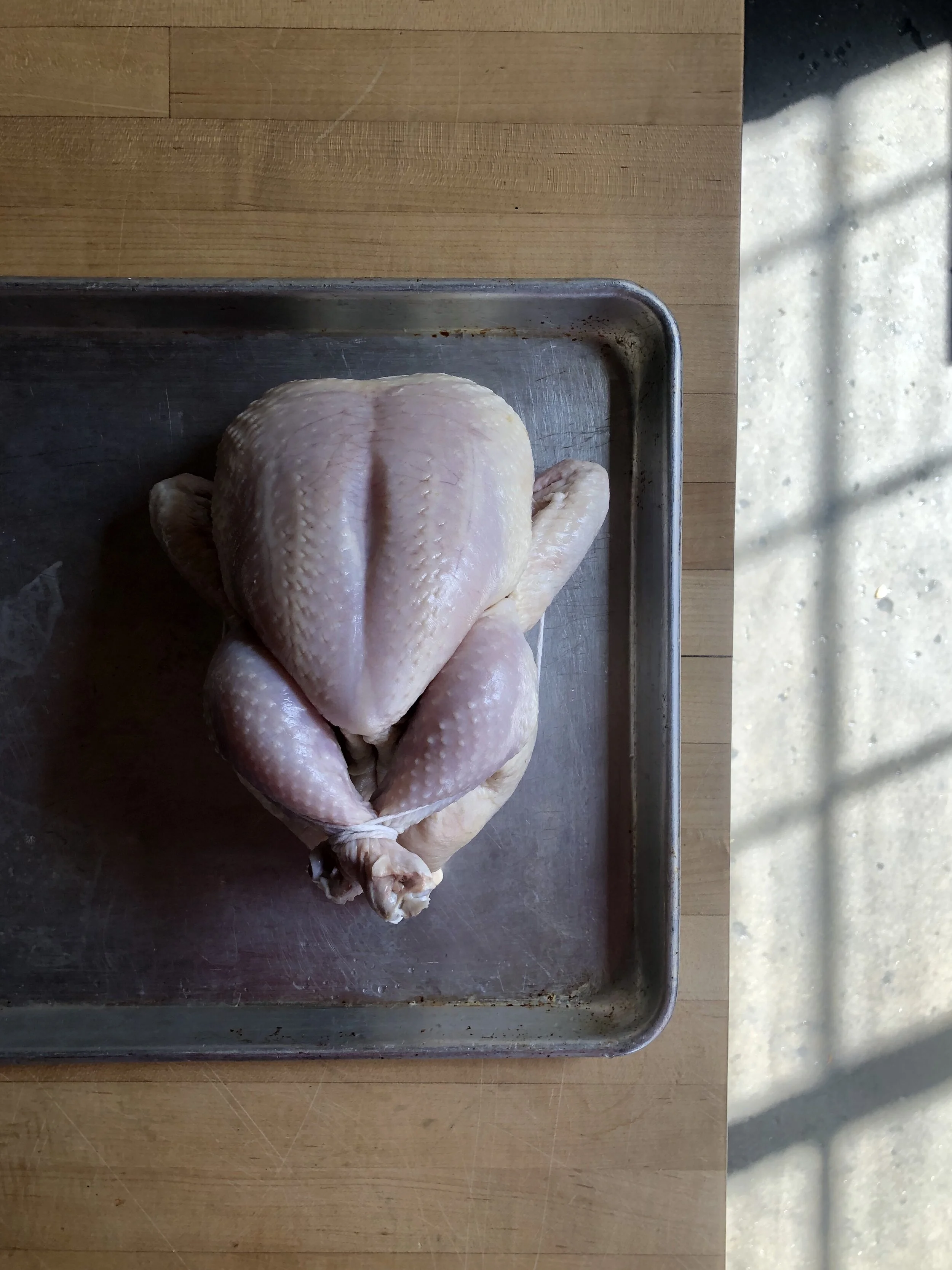Cassoulet may very well be one of the most rewarding dishes to make during the cold winter months; it is satisfyingly rich, tremendously flavorful, and, this is key, hard to screw up. Below is the recipe that I use as a guide when making cassoulet, but it’s a little different each and every time depending on what I have on hand (so don’t worry if you’re missing this or that).
If you’ve got a full day, take your time! The best cassoulet’s are cooked slowly at a low temperature. Beans hold their integrity best when cooked slowly, but even if they are cooked quickly, they’re still delicious - so work within the time frame you have.
At its heart cassoulet is a bean casserole, and I give you full permission to treat it as such even if it sounds fancy, French, and indulgent.
Cassoulet
Yield: 3-4 servings
2 cups dried flageolet beans or canellini soaked for at least 8 hours in
2 tablespoons vegetable oil, duck fat, or chicken fat
2 toulouse sausages
3 ounces pancetta, cut into 1/4 inch pieces
1 small yellow onion, diced
1 stalk celery, minced
1 carrot, minced
5 cloves garlic, crushed under your knife or palm
2 sprigs fresh thyme
2 sprigs fresh parsley
2 bay leaves
1 quart (4 cups) water or unsalted chicken stock, plus more as needed
1 teaspoon kosher salt, plus more as needed
1/2 teaspoon freshly ground black pepper
1-2 confit duck legs
1/2 cup breadcrumbs, optional
Add the flageolet beans to a large bowl or container and cover with 8 cups of water for 8-24 hours in the fridge. If using canellini, soak for at least 12 hours.
When the beans are finished soaking, it’s time to start cooking! Preheat a dutch oven or cast iron over medium high heat. When hot add in the vegetable oil (or your fat of choice) and the Toulouse sausages. Turn the heat down to medium. Brown the sausages on two sides, being careful not to burn the oil (you’ll know it’s burning if it starts to smoke). If things start to get smokey turn down the heat. When the sausages are golden brown on both sides, remove them from the pan and set aside for later use. The sausages do not need to be fully cooked as they’ll cook fully later in the oven.
If you’ve burned the fat and it no longer smells delicious, carefully pour it into the garbage or compost and add new fat. Otherwise, add the pancetta into the hot pan and cook over medium-low heat until the fat has rendered and the pieces are golden brown.
Add the celery, carrots, onion, and garlic to the pancetta and cook over medium heat until the onions are soft.
If you’re in a rush to get dinner on the table, preheat the oven to 400°F, if you’ve got time, go low and slow and preheat it to 300°F. Remember that you can adjust the temperature as you go if you feel like things are moving to fast or slow for your liking.
When the onions are soft, add the beans, thyme, bay, leaf, parsley, and 3 cups of water or stock. Turn the heat to high and bring to a simmer. Turn the heat down to keep at a simmer for 20 minutes. After 20 minutes, taste the beans to get a sense of how done they are and add more salt if needed. Note that flageolet beans will cook much faster than canellini.
Place the sausages on top of the beans and move carefully to the oven. Bake until beans are nearly tender, adding more hot water or stock as needed to prevent them from burning; the beans should be just peaking out from the water. After 30 minutes, place the duck confit on top of the cassoulet and sprinkle with half of the breadcrumbs. Continue baking the cassoulet until the beans are tender. If a crust forms on top of the beans, crack it gently with a spoon to allow steam to escape.
When you’re ready to eat, remove from the oven, sprinkle with remaining breadcrumbs (if desired), and eat while hot. Cassoulet tastes even better heated up the next day, so feel free to make this dish in advance or simply get excited about leftovers!








